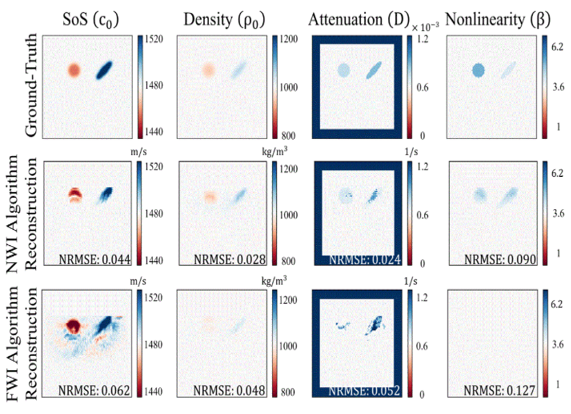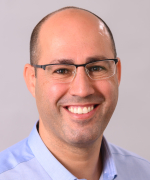A Nonlinear Waveform Inversion (NWI) algorithm enhances ultrasound imaging by using Recurrent Neural Networks (RNNs) to reconstruct material properties from acquired signals. Unlike traditional methods, it captures nonlinear acoustic behavior, improving resolution, contrast, and anatomical interpretation for greater diagnostic precision.
- Discerning between benign and malignant breast tumors
- Identifying muscle loss and fatty muscular degeneration
- Differentiating healthy and diseased tissues (e.g., in livers affected by NAFLD)
- Quantifying fat levels in the liver (critical for monitoring NAFLD and NASH)
- Increases diagnostic reliability
- Non-invasive and non-ionizing
- Reduced processing time and costs
- Easily integrated into existing medical ultrasound equipment
- Adaptable to other imaging techniques (photoacoustic, seismology)



Reconstruction of simulated medium properties (headers), using the NWI algorithm compared to the FWI. The left and right objects are fat and liver, respectively.
Algorithm development and validation completed, with superior performance demonstrated versus standard methods. Clinical translation currently in progress.


